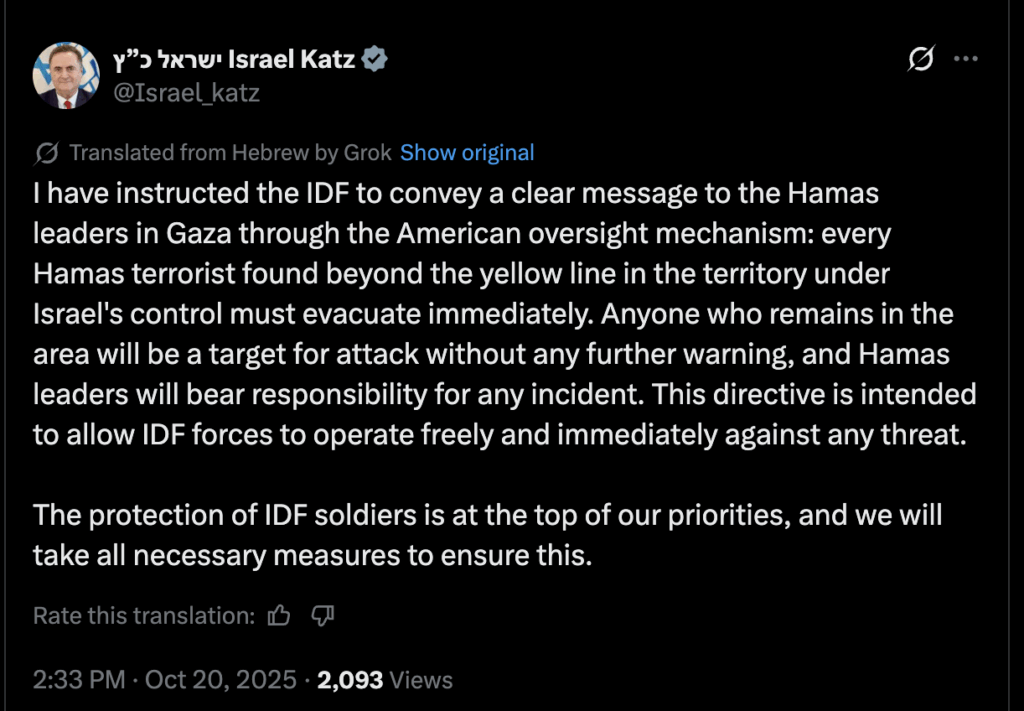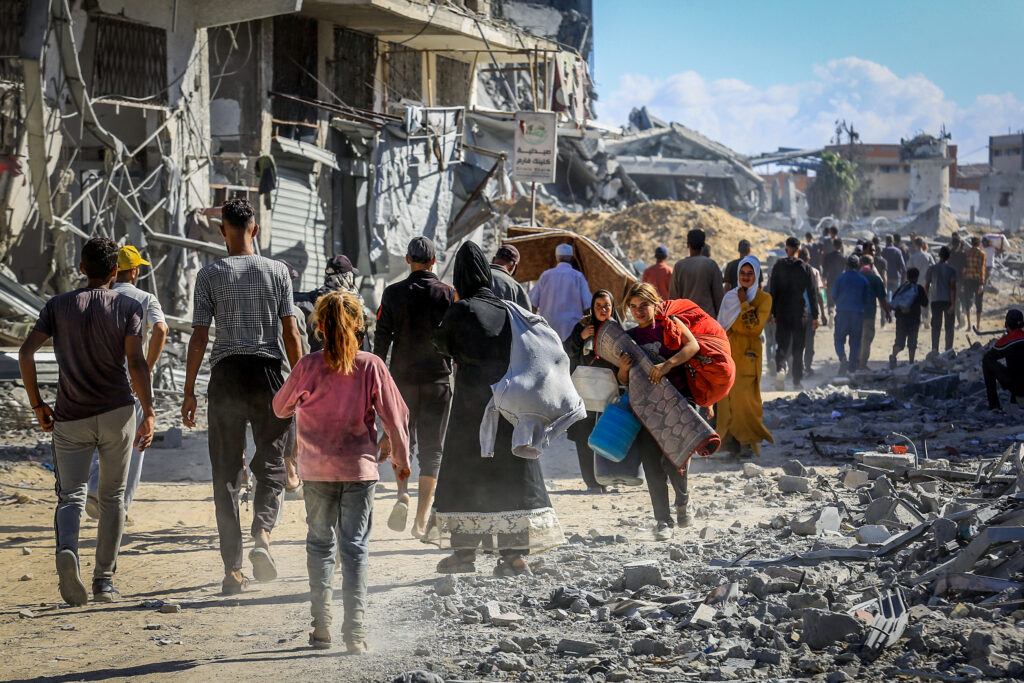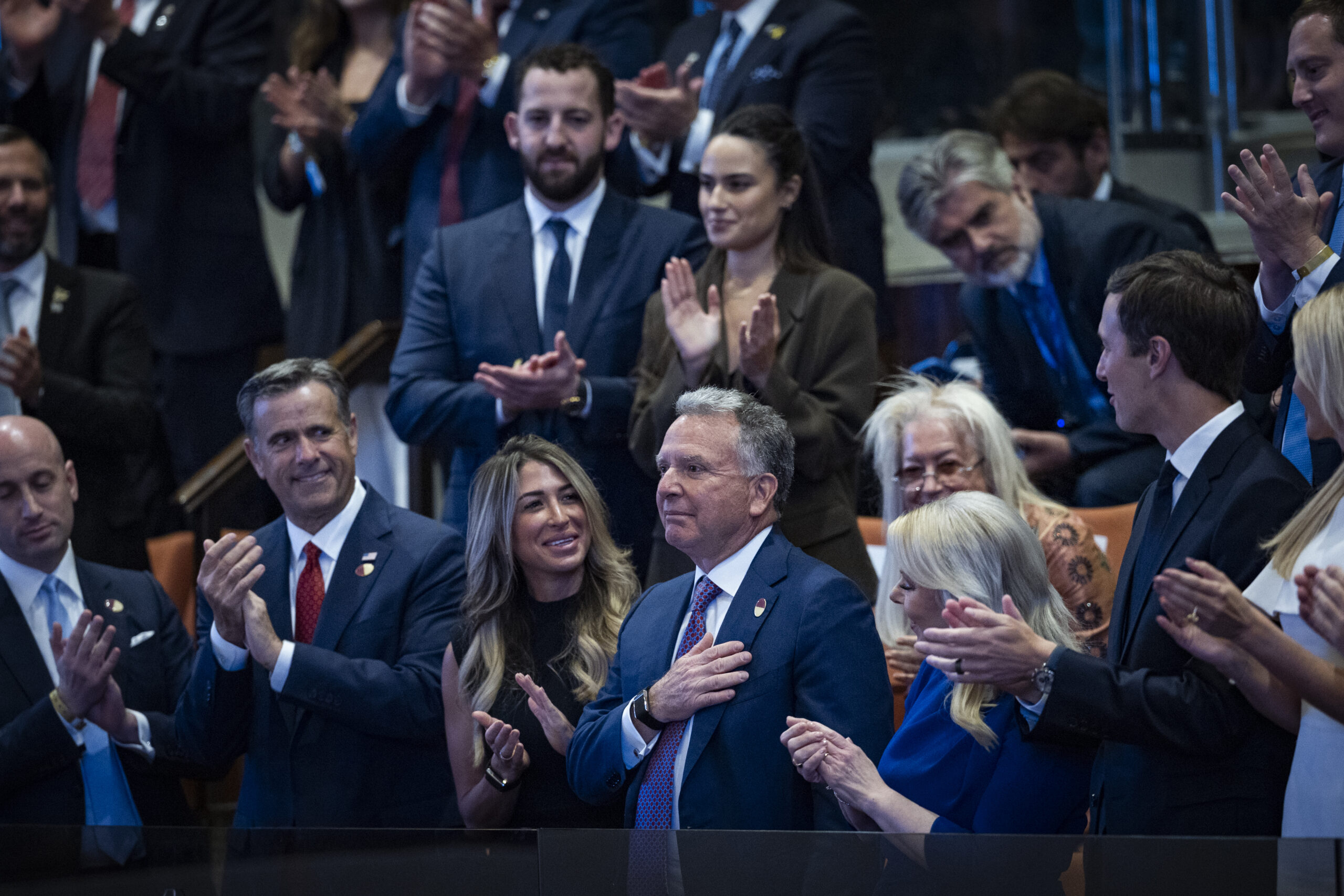A tenuous ceasefire between Israel and Hamas faced a new strain today, Monday, October 20th, after a cell of Hamas terrorists attempted to infiltrate Israeli-controlled territory in northern Gaza, marking yet another violation of the fragile truce that has held—barely—since early October.
According to the Israel Defense Forces (IDF), a group of armed terrorists was spotted crossing the Yellow Line, the boundary demarcating ceasefire zones between Hamas- and IDF-controlled areas of Gaza. The incident occurred in the volatile Shuja’iyya neighborhood of Gaza City.
“The forces fired toward the terrorists who crossed the Yellow Line in order to remove the threat to the troops,” the IDF said in a statement.
A second infiltration attempt followed shortly thereafter in the same area. Israeli troops again engaged the attackers, eliminating what the army described as “an immediate threat.” Palestinian Authority outlet WAFA and Qatari state media Al Jazeera both reported that two Hamas operatives were killed in the clashes.
Israeli Defense Minister Israel Katz warned that any Hamas operatives found beyond the Yellow Line—inside areas under IDF control—would be considered legitimate targets, even during the ceasefire.
“Every Hamas terrorist beyond the Yellow Line must evacuate immediately,” Katz said on Monday. “Anyone who remains in the area will become a target for attack, without any additional warning, in order to allow the IDF to act freely and immediately against any threat.”

The infiltration attempts come just one day after Hamas launched a missile attack on an Israeli armored personnel carrier, killing two IDF soldiers and wounding three others. Israel responded with limited airstrikes on Hamas targets across Gaza, accusing the terror group of “a blatant violation” of the ceasefire.
The latest incidents coincided with the arrival in Israel of White House special envoy Steve Witkoff and Jared Kushner, senior adviser and son-in-law to U.S. President Donald Trump, as part of a renewed American push to preserve the ceasefire and advance what Trump officials are calling “Phase Two” of their Gaza peace plan.
The administration’s efforts were underscored Sunday night during an interview on CBS’s 60 Minutes, where Kushner and Witkoff described their unconventional approach to Middle East diplomacy—one they likened more to real estate deal-making than traditional statecraft.
“We wanted the hostages to come out,” Kushner told interviewer Lesley Stahl. “We wanted a real ceasefire that both sides would respect. We needed a way to bring humanitarian aid in. And then we had to write all these complex words to deal with 50 years of stupid word games that everyone in that region is used to playing.”
Both envoys downplayed the recent Hamas violations, with Trump and Vice President JD Vance urging both sides to “stay the course” and maintain calm.
“There’s been progress,” Witkoff said. “I wish the world could have seen Israelis and Qataris hugging after the agreement was reached. It shows there’s still hope.”
In a parallel effort to salvage the ceasefire, a Hamas delegation led by senior official Khalil al-Hayya arrived in Cairo Monday for talks with Egyptian and Qatari mediators. The meetings are expected to focus on maintaining the truce and addressing Hamas’ claims that recent Israeli strikes violated the agreement.
Egypt and Qatar have long served as intermediaries between Israel and Hamas, facilitating both the ceasefire and previous hostage exchanges. The current talks are also expected to include discussions on intra-Palestinian unity, as Egypt prepares to host a conference aimed at reconciling Hamas and the Fatah-led Palestinian Authority.
Despite the flare-ups, Israel signaled late Monday that it remains committed to the U.S.-brokered ceasefire. The IDF reopened the Kerem Shalom border crossing to humanitarian aid deliveries into Gaza, after closing it temporarily in response to Hamas’ weekend attacks.
An Israeli military official confirmed that aid convoys had resumed “in full compliance with the signed agreement,” though the Rafah crossing between Gaza and Egypt remains closed “until further notice.”
Meanwhile, U.S. Vice President JD Vance is expected to arrive in Israel on Tuesday for meetings with Israeli leaders in an effort to reinforce American support for the ceasefire’s continuation.
The truce, brokered on October 8, came two years after the devastating 2023–2025 Gaza war that began with Hamas’ October 7 attacks on southern Israel—the deadliest single day for the Jewish people since the Holocaust.
Whether this fragile peace can endure amid fresh violence and deep distrust remains uncertain. But for now, diplomats are racing to keep the ceasefire—and the region’s hopes for stability—alive.
“In accordance with the directive of the political echelon, and following a series of significant strikes in response to Hamas’s violations, the IDF has begun the renewed enforcement of the ceasefire,” the Israeli military announced Sunday night. “The IDF will continue to uphold the ceasefire agreement and will respond firmly to any violation.”

Speaking aboard Air Force One, President Trump described the incidents as “very serious” but insisted that the truce remained intact. “We’re gonna have to see what’s happening. We wanna make sure it’s very peaceful with Hamas,” Trump told reporters, suggesting that the attack may have been carried out by “rebels within” the terror group rather than by its central command.
Vice President JD Vance echoed the president’s remarks, telling journalists that “Hamas is not a monolith — it’s made up of 40 different cells. Some of those cells will honor the ceasefire, but many will not.”
Prime Minister Benjamin Netanyahu convened an emergency security consultation with Defense Minister Israel Katz and senior IDF officials following the Rafah attack. Sources told Channel 12 News that Israel initially planned to suspend all aid deliveries to Gaza but reversed the decision after urgent appeals from Washington.
“The protection of IDF soldiers is a top priority,” Katz said in a statement. “Every Hamas terrorist operative located beyond the Yellow Line must evacuate immediately. Anyone who remains will be considered a target.”
The ceasefire agreement, brokered by the Trump administration and signed earlier this month in Cairo, requires Hamas to return the bodies of 28 Israeli hostages, release 20 living captives, and allow international monitors to supervise its eventual disarmament. To date, Hamas has returned only 12 bodies and continues to resist calls to disarm — a direct violation of the peace plan.
Videos circulating on social media in recent days have shown Hamas gunmen executing civilians in Gaza accused of collaborating with Israel, further eroding confidence in the group’s willingness to uphold the truce.
President Trump, in an interview with Fox News on Sunday night, said that Hamas had “promised to disarm” but warned that the U.S. or a regional proxy “could be forced to do it for them” if they fail to comply. “These are very violent people,” he said. “If they don’t do what they’re supposed to do, then we’ll have to do it for them.”
WATCH IN FULL: President Donald J. Trump sits down for an exclusive interview with the great @MariaBartiromo on @FoxNews @SundayFutures pic.twitter.com/qB2LqCVGRP
— Rapid Response 47 (@RapidResponse47) October 19, 2025
A senior U.S. official told Axios that Washington had “anticipated some clashes” in the early stages of the truce. “The next 30 days are going to be critical,” the official said. “We’re now in charge of what’s going on in Gaza when it comes to the implementation of the deal. We’re going to be calling the shots.”




